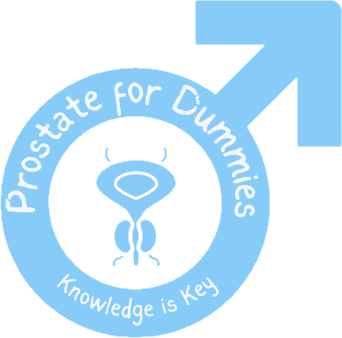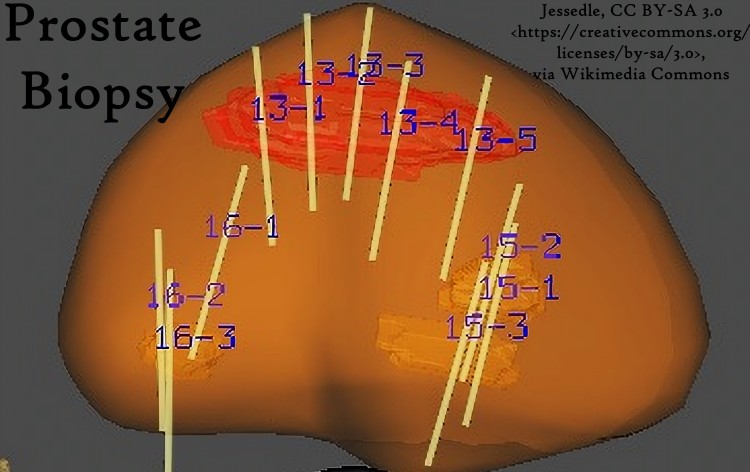Prostate Biopsy for Men Explained: What to Expect During the Procedure
A prostate biopsy is a crucial diagnostic procedure for men concerned about prostate cancer. This test involves removing small tissue samples from the prostate gland to examine them for cancerous cells. A prostate biopsy is currently the only definitive way to diagnose prostate cancer.

The procedure is typically recommended when other screening tests, such as a prostate-specific antigen (PSA) blood test, indicate a potential problem. While the thought of a biopsy may cause anxiety, understanding the process can help alleviate concerns and prepare patients for what to expect.
Men undergoing a prostate biopsy can anticipate a relatively quick outpatient procedure. The process usually takes about 10-15 minutes and is performed using local anesthesia. Recovery time is typically short, with most men able to resume normal activities within a day or two.
Key Takeaways
- Prostate biopsies are essential for accurate prostate cancer diagnosis.
- The procedure is quick, typically lasting 10-15 minutes with local anesthesia.
- Recovery is generally short, with most men resuming normal activities within 1-2 days.
Understanding Prostate Biopsy
A prostate biopsy is a crucial diagnostic procedure used to detect prostate cancer. It involves collecting small tissue samples from the prostate gland for microscopic examination. This process helps doctors accurately diagnose and plan appropriate treatment if cancer is present.
The Role of PSA Screening
Prostate-specific antigen (PSA) is a protein produced by the prostate gland. A PSA blood test measures the level of this antigen in a man’s blood. Elevated PSA levels may indicate prostate cancer, but they can also be caused by other conditions.
PSA screening is typically recommended for men over 50, or earlier for those with risk factors. The test results help doctors determine if further investigation, such as a biopsy, is necessary.
Normal PSA levels generally range from 0 to 4 ng/mL. However, there’s no specific cutoff point that definitively indicates cancer. Doctors consider various factors when interpreting PSA results, including:
- Age
- Prostate size
- PSA velocity (rate of change over time)
- Free PSA ratio
The Role of PHI Screening
Prostate Health Index (PHI) screening is an advanced blood test that combines three PSA markers: total PSA, free PSA, and [-2]proPSA. This test provides a more accurate assessment of prostate cancer risk compared to PSA alone.
PHI screening is particularly useful for men with PSA levels between 4 and 10 ng/mL. It helps reduce unnecessary biopsies by better distinguishing between benign conditions and potentially aggressive cancers.
The PHI score ranges from 0 to 100, with higher scores indicating a greater likelihood of clinically significant prostate cancer. This test can help doctors and patients make more informed decisions about proceeding with a biopsy.
The Role of MRI Imaging
An MRI will most likely be recommended before performing a biopsy. The MRI will give a good indication of prostate size and may indicate any lesions on the prostate that may be cancerous.
This prescreening will allow the doctor to taget the biopsy around the lesion and then randomly sample the remainder of the prostate.
Types of Prostate Biopsy
There are two main types of prostate biopsy procedures:
- Transrectal Biopsy: This is the most common method. A thin needle is inserted through the rectum wall to collect tissue samples from the prostate.
- Transperineal Biopsy: In this approach, the needle is inserted through the skin between the scrotum and rectum. It may be preferred in certain situations, such as when accessing specific areas of the prostate or for patients with a higher risk of infection.
Both procedures typically use ultrasound guidance to ensure accurate sampling. The choice between these methods depends on factors like prostate size, cancer location, and individual patient characteristics.
The Procedure Explained
A prostate biopsy typically takes 10 to 15 minutes and is often performed as an outpatient procedure. The steps generally include:

- Patient preparation: The patient lies on their side with knees drawn up to their chest.
- Local anesthesia: A numbing agent is applied to minimize discomfort.
- Ultrasound probe insertion: For transrectal biopsies, a lubricated ultrasound probe is inserted into the rectum to visualize the prostate.
- Tissue sampling: A spring-loaded biopsy needle quickly collects 10 to 12 core samples from different areas of the prostate.
- Sample preservation: The tissue samples are immediately placed in preservative solution for laboratory analysis.
Patients may experience mild discomfort during the procedure. After the biopsy, they are given instructions for post-procedure care and potential side effects to watch for.
Understanding Biopsy Results
Biopsy results are typically available within a few days to a week. A pathologist examines the tissue samples under a microscope to determine if cancer cells are present. The report will include:
- Diagnosis: Whether cancer is present or not.
- Gleason Score: If cancer is found, this scoring system (ranging from 6 to 10) indicates how aggressive it appears.
- Number of cores affected: How many biopsy samples contain cancer cells.
- Percentage of each core affected: The extent of cancer in each positive sample.
- Grade Group: A simplified system (1-5) based on the Gleason score, with higher numbers indicating more aggressive cancer.
Understanding these results is crucial for determining the appropriate treatment approach. Patients should discuss their biopsy results thoroughly with their healthcare provider to make informed decisions about their prostate health management.
Managing Risks and Following Up

Proper management of risks and follow-up care are crucial aspects of the prostate biopsy process. Patients need to be aware of potential complications, understand post-procedure care, and be prepared for interpreting biopsy results.
Potential Complications
Infection is a primary concern after a prostate biopsy. Patients typically receive antibiotics before and after the procedure to reduce this risk. Bleeding is another common side effect, which may occur in urine or semen for several days or weeks.
Men on anticoagulants like Coumadin should inform their doctor before the biopsy. These medications may need to be temporarily adjusted to minimize bleeding risks.
Rarely, more serious complications can occur, such as sepsis or difficulty urinating. Patients should seek immediate medical attention if they experience fever, chills, or inability to urinate.
Post-Biopsy Care and Monitoring
Patients should rest for 24-48 hours after the biopsy. Avoiding strenuous exercise for this period can help reduce the risk of heavy bleeding.
It’s normal to see blood in urine or semen for up to six weeks. However, if bleeding becomes heavy or doesn’t improve, patients should contact their healthcare provider.
Drinking plenty of water helps flush the urinary system and reduce infection risk. Patients should complete their full course of prescribed antibiotics, even if they feel well.
Follow-up appointments are typically scheduled 1-2 weeks after the biopsy to discuss results and address any lingering side effects.
Interpreting the Pathology Report
The pathology report provides crucial information about the biopsy results. It will indicate whether cancer cells were found and, if so, their characteristics.
The Gleason score is a key component of the report. It ranges from 6 to 10 and indicates how aggressive the cancer is. A lower score suggests a slower-growing cancer.
If cancer is detected, the report will also include information about how many biopsy samples contained cancer and what percentage of each sample was affected.
Based on these results, the doctor will discuss treatment options. These may include:
- Active surveillance for low-risk cancers
- Surgery
- Radiation therapy
- Other targeted treatments
In some cases, additional tests like an MRI might be recommended for further evaluation.
Frequently Asked Questions
Prostate biopsies involve important considerations regarding side effects, cancer detection rates, procedure details, potential impacts, and recovery time. Men often have specific questions about what to expect before, during, and after this diagnostic test.
What are the long-term side effects of undergoing a prostate biopsy?
Long-term side effects from prostate biopsies are rare. Some men may experience temporary urinary problems or erectile dysfunction, but these typically resolve within a few weeks.
In rare cases, infection or bleeding complications can occur. However, proper antibiotic use and sterile techniques minimize these risks.
What is the likelihood that a prostate biopsy will indicate cancer?
The likelihood of a prostate biopsy detecting cancer varies based on individual risk factors. Generally, about 25-30% of biopsies reveal cancer.
Note: This is because a biopsy is only called for when there is some concern regarding the prostate.
PSA levels and other screening results influence detection rates. Even with normal PSA levels, 20-25% of biopsies may still identify cancer.
How is a prostate biopsy procedure typically performed?
A prostate biopsy is usually performed through the rectum (transrectal approach). The doctor inserts an ultrasound probe to guide the biopsy needles.
Multiple small tissue samples are taken from different areas of the prostate. Local anesthesia helps minimize discomfort during the procedure.
When my friend had a biopsy, 22 samples were taken 10 around the lesion identified on the MRI and 12 randomly taken from around the prostate.
Can a prostate biopsy result in any lasting damage to the prostate?
Lasting damage to the prostate from a biopsy is extremely rare. The prostate typically heals quickly from the small needle punctures.
In very uncommon cases, scarring or inflammation may occur. However, these issues usually resolve without long-term consequences.
Note: A biopsy will cause your PSA numbers to be elevated for several weeks following the biopsy (trauma). Be sure to allow PSA levels to settle down before getting another PSA test.
What should one expect if a prostate biopsy comes back positive?
A positive biopsy result indicates the presence of cancer cells in the prostate. The pathology report will provide details on the cancer’s grade and extent.
Further testing, such as imaging scans, may be needed to determine if the cancer has spread. Treatment options will be discussed based on the specific findings.
How much recovery time is needed after a prostate biopsy?
Most men require minimal recovery time after a prostate biopsy. Many can resume normal activities within 1-2 days.
Light bleeding or discomfort may occur for a few days. Patients are advised to avoid strenuous activities for about a week to allow for proper healing.

